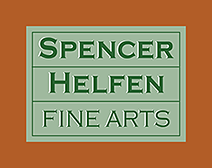1911-1960
Theme/Style – Modernism, Social Realism, Abstract Expressionism, figurative art
Media – Oils, watercolors, murals
Artistic Focus – Considered by many to be the first California new figurative painter, David Park was “the first non-objective artist here to feel that the great international divide in the watershed of abstraction had been reached––the beginning of an American ‘post-abstract’ period.” And yet others say that Park’s career “is not the story of a switch from abstract to figurative; it is a complicated, fluctuating interplay of the two.” In addition to the use of linear contours and shapes as a means of expression, Park’s early work, in the period from 1930 to 1945, reflects his belief that the human form is the most interesting object to paint. Prior to gaining widespread fame for his authoritative works of the 1950s, he experimented with lyrical genre scenes, Cubism and Abstract Expressionism.
Career Highlights –
- In 1930, he served as an assistant to Ralph Stackpole during the creation of the monumental sculptures adorning the front of the Pacific Stock Exchange in San Francisco.
- In 1944, he taught at the California School of Fine Arts. In 1955, Park joined the faculty of UC Berkeley.
- Park’s works often demonstrate a use of paint as the “subject,” as an “oozing, unstable, constantly moving plastic liquid mass”; the use of natural, organic forms or shapes; a highly developed concept of the function of color; and a distinctive concept of space that was either “expanding” or “centrifugal” in nature.
- His career was cut short by a diagnosis of terminal cancer.
- His last works were gouaches infused with Park’s customary “vitality, profundity, energy and warmth: his ‘gods’.”






